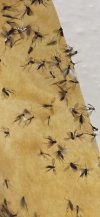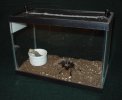Tarantulas&Cats
New Member
- Messages
- 17
- Location
- Houston Texas
Does anyone know anything about tiny flys coming from fresh new Reptisoil or ZooMed frog moss? New T enclosures infested. I do use live plants, but I clean (rince) them very well & do not use the same soil they came with... please any advice. I'm worried about all my tarantulas. I have like close to 30...


